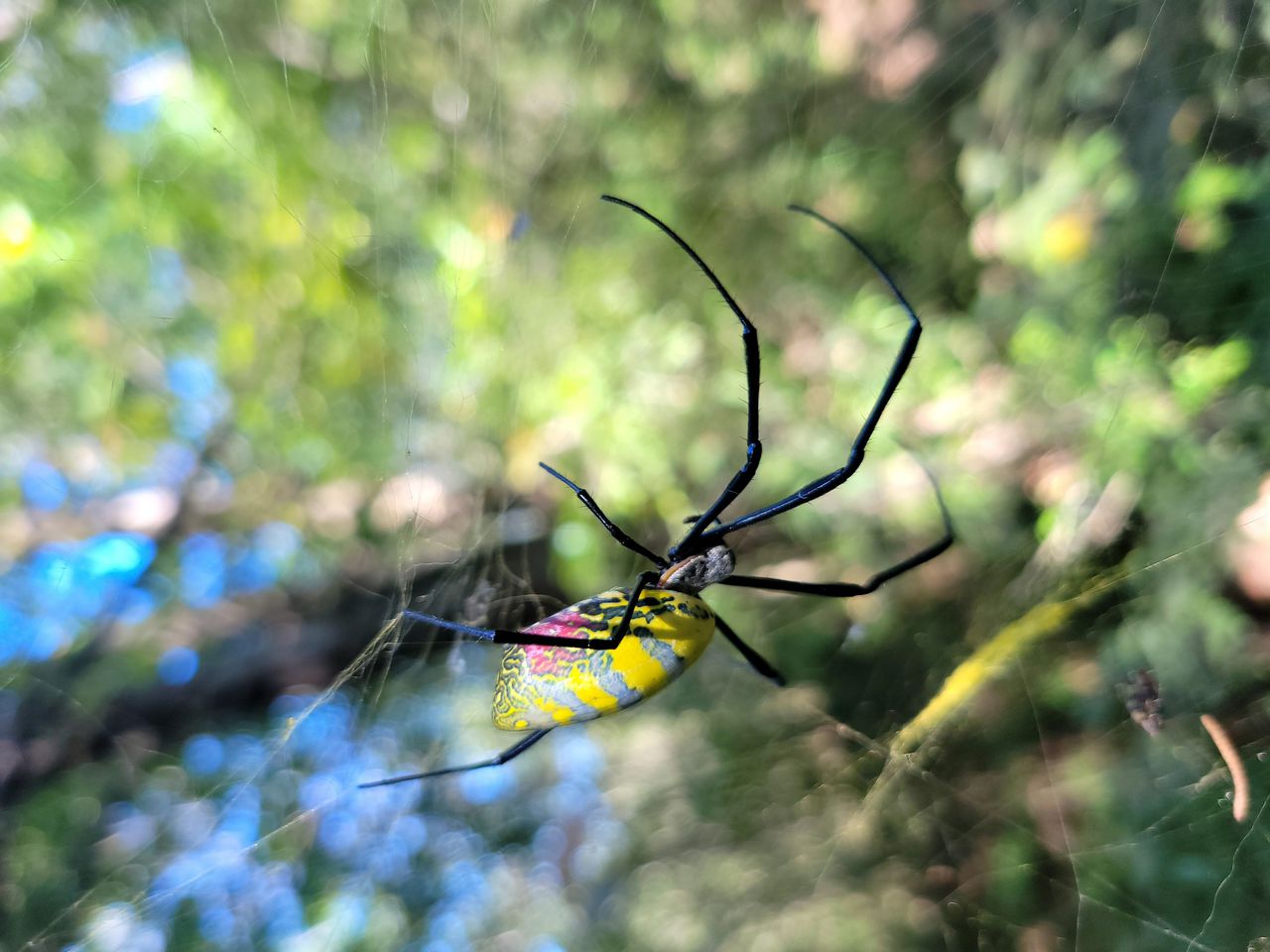Joro spider invasion reaches Alabama: What you need to know
A hiker in north Alabama has reported to AL.com what would be the first confirmed sighting of the invasive Joro spider in Alabama.
The Joro spider, which can grow to be several inches long, has become a huge nuisance for people living in north Georgia, reproducing in huge numbers and spinning large, three-dimensional webs that can take over porches, sheds and wooded areas.
Since being introduced to north Georgia from Asia sometime around 2013, the spiders have spread to Tennessee and both Carolinas, and is expected to continue to spread throughout the eastern United States.
Now it appears the spiders are in Alabama.
Mathew Guthrie of Paint Rock, Ala. said he was hiking with his brother at the Roy B. Whitaker Preserve in Paint Rock, about 15 miles east of Huntsville on Saturday, when he came across a spider like nothing he’d ever seen before.
“We almost ran into it,” Guthrie said. “I went to move the web and it was really thick, almost like fishing line or like a thread from clothing, but it was golden.
“And that kind of took us back a little bit. Then we looked at the spider, and we had never seen one like that before.”
He took photos of the large, yellow spider and its golden web, which he sent to AL.com as seen in the gallery above.
Guthrie said he’s been going to that preserve for years but never saw anything like this spider until last week.
“We sat and watched it and tried to take pictures of it for maybe 20 minutes, because we just thought it was really cool,” Guthrie said.
“I hate spiders, but I was like ‘That is neat.’”
AL.com sent Guthrie’s photos to Andy Davis, a research biologist at the University of Georgia who studies Joros, who confirmed that the animal in the photos is a large, female Joro spider, likely already carrying an egg sack, meaning it’s likely been in the area for a while.
“Basically, by the time the average person sees one, they’re already there, and they’ve been there for a while,” Davis said. “This one in the picture looks like a big fat female, which means she probably grew up here.”
Davis said it’s no surprise that the Joro would reach into the Huntsville area, after having already been reported around Chattanooga, Tenn. and multiple spots on the Georgia side of the state line.
“North Georgia especially is basically overrun with them,” Davis said. “So it is damn near inevitable that you’re going to get some in Alabama this year.”
Here are some facts about the Joro spider:
- Joro spiders are known as remarkably good hitch-hikers, and young spiders are able to spread by “ballooning,” or spinning thread into the air during high winds to carry them off to new areas. They can also hide egg sacks on vehicles or containers that can hatch their offspring in new locations. Davis said the one reported Joro sighting in Oklahoma happened when a student at the University of Georgia spotted and recognized the spider at her hometown in Oklahoma and realized she had probably inadvertently brought the spider (or its eggs) there herself. “These things are going to go everywhere,” Davis said. “They’re suited for the U.S. climate, unfortunately, and they’re really good at hitchhiking.”
- The Joro is a durable spider, with research showing that it has several advantages over native spiders, such as a higher metabolism and heart rate that will likely allow the Joro spider to survive in colder climates than many other spiders.
- Joros are not considered dangerous to humans. They are have venom, but their tiny fangs make it unlikely that they could bite through a human’s skin.
- If you think you’ve seen a Joro spider, Davis recommends reporting the sighting through the web site iNaturalist, where citizen scientists can report their observations of a number of species to help track their movements, or specifically to jorowatch.org, a website created by the University of Georgia to track the spread of this new invasive species.
- Davis said they can be quite a nuisance with their frequent massive web spinning, but that so far it doesn’t appear that they are having a negative impact on the ecosystems in areas where they have become established. “I don’t think the answer should be just swat it and kill it,” Davis said. “Because a lot of people have that instant reaction, ‘Oh, let’s kill it. It’s a non native as a spider. It’s ugly.’ And I personally don’t think that’s the right idea.”
- There may even be a benefit to having Joros around. The spiders are known to eat brown marmorated stink bugs, another invasive pest that can cause significant crop damage and unsightly swarms in homes and other structures. “Joro spiders present us with excellent opportunities to suppress pests naturally, without chemicals,” University of Georgia entomologist Nancy Hinkle told the school’s news service last year. “I’m trying to convince people that having zillions of large spiders and their webs around is a good thing.”
- Davis concedes though, that having huge spiders and their webs around the property isn’t for everyone. “People in Atlanta are at their wit’s end right now with the spider webs,” Davis said. “Because once they do get on your house or around your property, they’re a nuisance for sure. And so that’s what can people can in Alabama can expect, really. But then again, philosophically, does a species deserve to die because it annoys us? I mean, that’s sort of where I am.”
